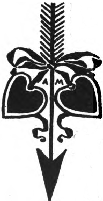 Paul Heyse portrait WikipediaAlthough I am entirely unfamiliar with the writer, Paul Heyse, he is notable in Germany. He was the first German to receive the Nobel Prize for literature. He is also said to have been the most noteworthy since Goethe. (Wikipedia) This review concerns a haunted house tale, "At the Ghost Hour: The House of the Unbelieving Thomas" which is available at Gutenberg.org.
Paul Heyse portrait WikipediaAlthough I am entirely unfamiliar with the writer, Paul Heyse, he is notable in Germany. He was the first German to receive the Nobel Prize for literature. He is also said to have been the most noteworthy since Goethe. (Wikipedia) This review concerns a haunted house tale, "At the Ghost Hour: The House of the Unbelieving Thomas" which is available at Gutenberg.org.The tale gives us a good picture of the two ghosts which seem to have all the foibles of regular people. They haunt a home, but the occupants are not really bothered by them.
The home, though, is known to be haunted and is therefore shunned by most people. That is, except for a man, Wenzel Kospoth, who kept the house. After hearing about a mother, Frau Cordula, and daughter, Gundula, being persecuted by their neighbours as witches, he had the cottage made available for a small fee.
It is, however, the neighbours and Christians who dabble in the dark arts. They are the ones who have the séances with ghosts and practice of the dark crafts. The witch, as they call her, merely uses herbs to help people, by which she was persecuted.
 |
| from Gutenberg.org |
He tries to go back to his old life prior to the incident. However, he is somewhat in love with the girl, and out of love with the woman to whom he had previously been in love. It is at a séance that it is revealed that he has indeed fallen in love with the witch's daughter. Though he had tried to deny his feeling for her, this revelation proves to be too much. He no longer feels love for his former affection.
On his way to Ghost Lane, he discovers the house on fire. None of the neighbours lift a hand to help. He is forced to break in by himself to assist the mother and daughter out of the dire circumstance.
I find the irony to be the most intriguing in this story. It is the witch who uses simple medicinal herbs to assist the sick and the Christians who use the arts to purposes that might be construed as Satanic.
 |
| from Gutenberg.org |
Although not well connected to the story, twice I found it quite funny when Heyse referred to the short length of Gundula's skirt and how one might see her ankles for it. Not exactly what I consider short, but it is found to possibly be objectionable. This is to point out how extreme this period might be considered in terms of Puritanism.
The story is a good novella, and well worth a few hours time.

No comments:
Post a Comment